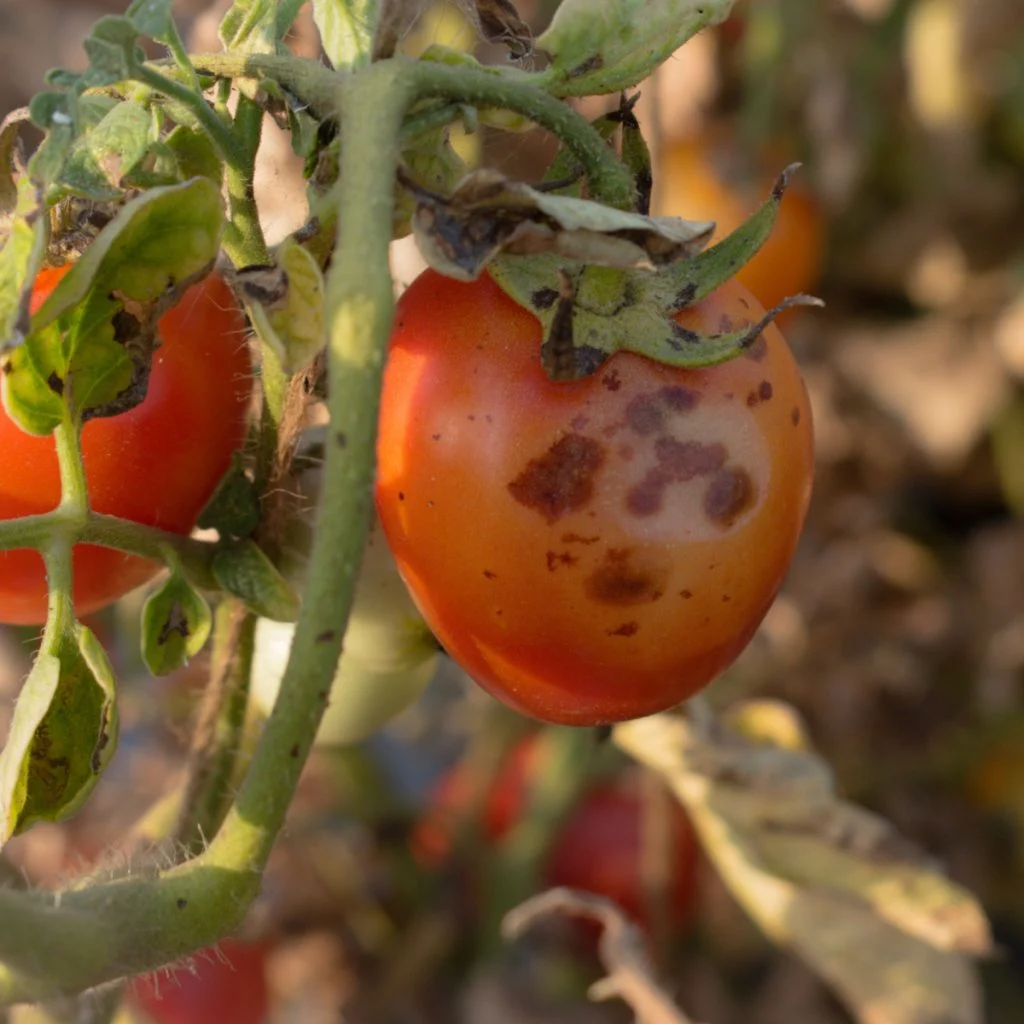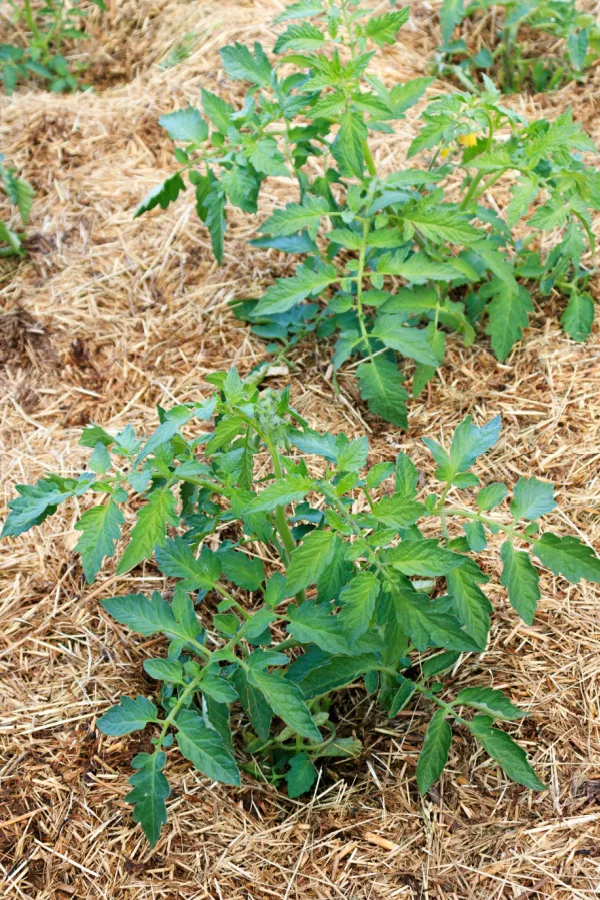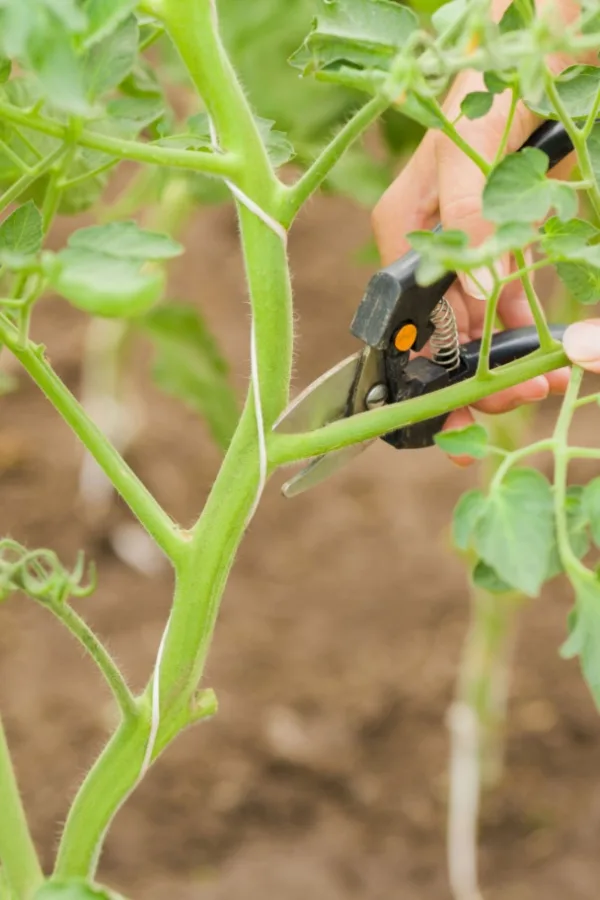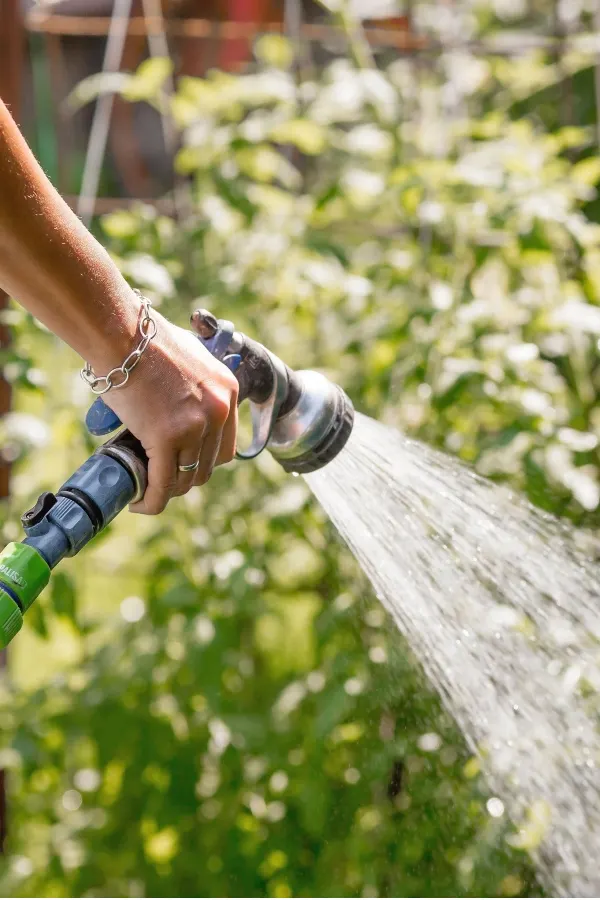Looking for a few simple ways to help your tomato plants avoid getting blight this summer?
Few things are more frustrating for gardeners than watching their tomato plants thrive early in the season – only to see them suddenly wilt, turn yellow or brown, and start dying off just as they should be reaching their peak.
Most of the time, this mid- to late-summer decline is due to a devastating fungal disease called tomato blight. It can strike fast, and if not stopped early, it can all but wipe out an entire tomato crop in just a few weeks.

Blight is one of the most common problems faced by tomato growers. Once it settles in, it spreads through the plant’s leaves, stems, and even the fruit itself, leaving behind a trail of damage that can be nearly impossible to stop.
It weakens the plant, reduces harvests, and often kills the entire plant before the season ends. But while it’s hard to cure once it shows up, the good news is that there are a few simple, proactive steps you can take in the summer months to prevent it from ever becoming a problem in the first place.
How To Help Tomato Plants Avoid Blight In The Summer
The key to keeping blight away is to stop it before it starts. And that means protecting your tomato plants from the very conditions that allow blight to take hold and spread. Blight is a soil-borne disease, which means it lives in the soil and spreads to plants when spores are splashed up onto the lower leaves.
From there, it can quickly move through the plant and even jump to nearby plants. That’s why prevention is everything. And the three most effective ways to keep your tomato plants blight-free in the summer come down to mulching, pruning, and watering correctly.
#1 Mulch Heavily Under Tomato Plants
One of the most powerful and effective ways to fight tomato blight is with mulch. Blight spores live in the soil, and every time it rains or you water the garden, those spores can splash up onto the lower leaves of your tomato plants.

Once that happens, it only takes a few days for the disease to take hold and start spreading. That’s why mulching under your tomato plants is so important. A thick layer of mulch acts like a barrier between the soil and the plant.
It prevents soil and the harmful blight spores it contains from being flung up onto the leaves during a rainstorm or watering session. Instead of water droplets hitting bare soil and splashing upward, they hit the mulch and settle in.
The best type of mulch for tomatoes is straw, shredded leaves, grass clippings, or even pine needles. Apply a layer at least four inches thick, and make sure to keep it in place throughout the growing season. If the mulch starts to thin out or wash away, reapply as needed.
Besides protecting plants from blight, mulch offers other great benefits, too. It helps regulate the temperature of the soil, which is especially useful during the heat of summer. It also helps conserve moisture, reducing the need for frequent watering and helping roots stay cooler and more hydrated. And as it breaks down over time, it adds organic matter to the soil, improving soil health and structure.
#2 Pruning Lower Branches To Help Tomato Plants Avoid Blight
Mulching helps protect your plants from below, but the second secret to keeping blight at bay involves taking care of the lower part of the plant itself.

The bottom leaves of tomato plants are the most vulnerable to blight because they’re closest to the soil. Because of that, they are most likely to get hit by any spores that manage to splash up.
To prevent this, it’s important to prune up the lower part of your tomato plants. Start by removing any leaves or stems that are touching the ground or within four to six inches of the soil. Use clean, sharp garden scissors or pruners, and make your cuts at the base of the stem where it meets the main stalk. Affiliate Link: 8″ Professional Premium Titanium Bypass Pruning Shears
Pruning like this creates a safe zone between the soil and the leaves. Even if a few spores do get kicked up, there won’t be any nearby leaves for them to land on. And with nothing to infect, the disease has a much harder time gaining a foothold.
It’s best to prune gradually, especially as your plants grow taller. As the season progresses, you can continue to remove the lowest sets of leaves, always keeping a clear buffer between the plant and the ground. Be sure to discard any pruned leaves away from your garden, and never compost infected or diseased plant material.
#3 Water Low and Slow – Never Overhead
The third big key to help your tomato plants avoid blight away is making sure to water safely. While it might seem easier to spray water over the whole garden with a hose or sprinkler, doing so can do more harm than good. Overhead watering is one of the fastest ways to spread blight.
Every time water hits the soil from above, it sends soil and spores flying up into the air. And, of course, onto your plants. Even worse, wet leaves give those spores the perfect environment to stick, grow, and multiply. Once they land, they begin to infect the leaf tissue, and the disease spreads from there.

Watering For Success
To avoid this, always water tomato plants at the base. It’s best to get the soil moist, not the leaves. Use a watering wand, a hose with a slow stream, or even a drip irrigation system to deliver water directly to the root zone. This not only prevents splash-up but also makes sure the water gets where the plant needs it most.
When you water, take your time. Water slowly and deeply to encourage roots to grow downward and stay strong. Fast, shallow watering leads to weak, shallow roots that are more prone to stress, especially during hot, dry weather. And stressed plants are far more vulnerable to disease. See: How To Help Tomato Plants In Hot Weather
It’s best to water in the early morning whenever possible. This gives the plant time to absorb the moisture and also allows any water on the leaves or surrounding area to dry quickly as the day warms up. Evening watering can leave too much moisture on and around the plant overnight, creating another chance for blight and mildew to take hold. See: How To Keep Wet Tomato Plants Healthy After Too Much Rain.
A Few Extra Tips To Stay Ahead of Blight
While mulching, pruning, and proper watering are the big three secrets to stopping blight, there are a few other things that can help.
Rotating your tomato crop each year is also very important. Because blight lives in the soil, planting tomatoes in the same spot year after year increases the chance of infection. Try to rotate your tomato plants to a different area of the garden every two or three years.
It’s also smart to space your tomato plants far enough apart. Crowded plants trap moisture and reduce airflow, both of which encourage blight. Giving each plant enough room to grow and breathe can go a long way in preventing disease. Choose disease-resistant varieties whenever you can, and always remove any infected leaves as soon as you see signs of yellowing, spotting, or wilting.
Blight may be a serious threat, but with just a little work you can help your tomato plants avoid it this summer!
I Grow Tomatoes
Follow Our Facebook Page For Even More Great Tomato Growing Tips! I Grow Tomatoes Facebook Page
I Grow Tomatoes is a website created for those who love all things about tomatoes – from planting and growing – to cooking and canning! We publish two articles every week, 52 weeks a year. Sign up today to follow via email! This article may contain affiliate links.
